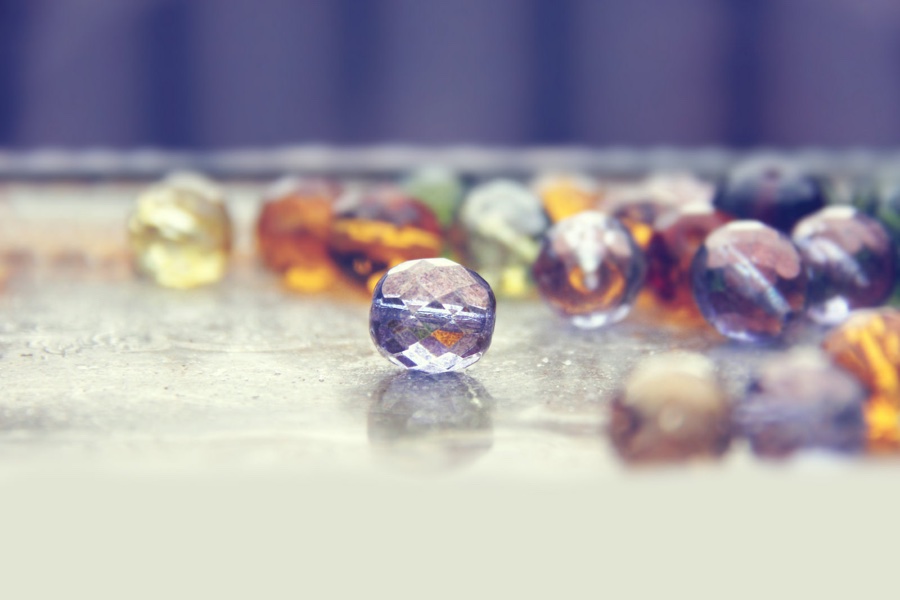Beginners guide for beading
Creating your own jewellery has numerous benefits. Not only does it allow you to give a unique twist to your outfits or presents, it also helps you to unwind after a long day and unleash your creativity. One of the most popular and simple ways of creating your own jewellery is by threading beads onto a piece of string or wire. This technique is called beading and is one of the oldest ways to create jewellery. In fact, the oldest pieces of jewellery known to men are comprised of perforated beads made from snail shells, dating back to 100,000 years ago.
If you want to find a new outlet for your creativity and start creating personalised jewellery with beads, here are some tips to get you started.
1. Know your beads
First of all, it’s important to know what types of beads you are going to use for your next piece of jewellery. There are hundreds of materials, shapes and sizes to choose from. Seed and glass beads are the most common types because of their versatility. Seed beads are small beads that are often combined with Swarovski elements or pearls as spacers to create stunning pieces with ease. You’ll often find them in woven designs and crochets as well as in jewellery. Glass beads are commonly used because they’re slightly cheaper than crystal beads, but look just as elegant. They come in many colours and shapes, from faceted rondelles to Czech Faceted beads. Other types of beads you can familiarise yourself with are pony, crystal, metal and pearl beads, semi-precious beads and miracle beads.
2. Choose the right bead stringing wire
Beading wire is a stringing material made up of numerous thin strands of steel that are woven together and often coated with nylon for a greater durability. Choosing your stringing material can be quite overwhelming when you’re starting a new project, but just keep in mind to go for the strongest thread possible. However, the thickness of the string you choose should be in balance with the size of the bead hole.
Craft wire, (suede, leather or rattail) cord, nylon thread and tiger tail beading wire are the most common types of stringing material. To select the one that is right for your project, decide on how flexible you want your jewellery to be (e.g. 7-strand beading wire is better for stiff designs, whereas 19-strand beading wire is more flexible), how much weight the wire is going to carry and which diameter fits best through the bead holes.
3. Familiarise yourself with different types of Jewellery findings
To create amazing pieces of beaded jewellery, make sure you stock up on the right tools and jewellery findings. Of course, you’ll need a strong glue and pliers, but don’t underestimate the importance of adding high-quality clasps, crimp beads, clamps, bead caps and jump rings to your newest piece either. Jewellery findings are the small items that join the different jewellery components together. Without suitable jewellery findings, your piece of jewellery can become a whole lot less secure.
4. Read magazines and watch tutorials for inspiration
There are plenty of magazines and books to find in your local craft store that can help you coming to terms with the lingo of jewellery making and provide you with new ideas. Don’t forget to take advantage of the internet either. Nowadays, there are hundreds of tutorials to find online that you can read or watch. From Youtube and Pinterest to the London Jewellery School blog and Craftsy, you’ll never be stuck for inspiration!
5. Stay focused
Finally, remember to stay motivated and don’t give up when your first piece of jewellery didn’t turn out like you wanted it to be. The trick is not to be too anxious to learn it all at once. Focus on basic beading techniques at first and you’ll see your skills will quickly improve.














